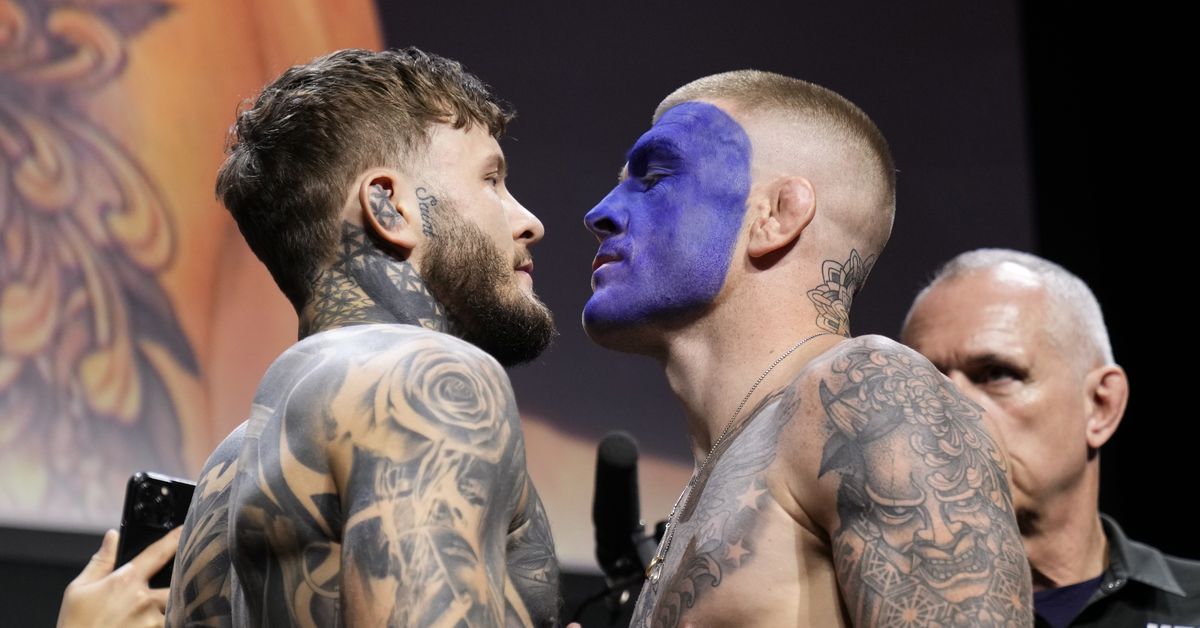Danger to Butt Tats: UFC London's Unexpected Tattoo Trend Sparks Debate
The recent UFC London event wasn't just a showcase of incredible fighting prowess; it also ignited a surprising online conversation – the potential dangers of "butt tats" for mixed martial arts (MMA) fighters. While the octagon saw spectacular knockouts and submissions, social media buzzed with a different kind of knockout: the risks associated with tattoos on a fighter's posterior. This unexpected trend has sparked debate among fans, medical professionals, and even some fighters themselves.
The Rise of the Butt Tat in MMA
Tattoos have long been a staple in the world of combat sports, often representing personal stories, affiliations, or cultural significance. However, the placement of tattoos is increasingly becoming a topic of concern, particularly large, intricate designs on the buttocks. The UFC London event highlighted this trend, with several fighters sporting prominent butt tattoos. While aesthetically striking, these designs present a unique set of challenges and potential risks within the high-impact world of MMA.
Why Butt Tats are a Concern in MMA
Several factors contribute to the heightened risk associated with butt tattoos in MMA:
- Increased Risk of Infection: The buttocks area is prone to friction and impact during grappling and ground fighting. This constant rubbing can break the skin, increasing the risk of infection, particularly if the tattoo is new or improperly healed.
- Impeded Movement and Flexibility: Large, heavily-inked tattoos can restrict movement and flexibility, potentially hindering a fighter's performance. This is especially relevant during takedowns, submissions, and grappling exchanges.
- Vulnerability to Injury: The skin on the buttocks is relatively thin. A significant impact during a fight could cause the tattoo to tear, leading to significant pain and potential complications.
- Hygiene Concerns: The intimate nature of the location makes maintaining hygiene during rigorous training and competition a greater challenge.
The Medical Perspective
Dermatologists and sports medicine professionals are increasingly concerned about the potential long-term effects of butt tattoos on MMA fighters. The repetitive trauma to the tattooed skin can lead to:
- Keloid Scarring: Excessive scar tissue formation.
- Hyperpigmentation: Changes in skin color.
- Tattoo Fading or Distortion: Due to constant friction and stretching.
While more research is needed, the current evidence suggests that the risks associated with butt tattoos outweigh the aesthetic benefits for MMA fighters.
The Fighter's Perspective
While some fighters embrace the aesthetic appeal of butt tattoos, others are beginning to reconsider the potential downsides. The increasing awareness of the risks could lead to a shift in the trend, with fighters prioritizing performance and health over aesthetic choices.
Looking Ahead: A Call for Caution
The UFC London event served as a stark reminder of the potential dangers associated with large butt tattoos in MMA. While the sport embraces individuality and self-expression, prioritizing the health and well-being of fighters should remain paramount. This incident highlights the need for greater education and awareness among fighters, coaches, and fans regarding the potential risks associated with tattoo placement and aftercare. Future events may see a shift in the trend, with fighters opting for safer tattoo placement options.
Keywords: UFC London, butt tattoos, MMA tattoos, fighter injuries, tattoo risks, MMA health, skin infections, tattoo safety, UFC, mixed martial arts, sports injuries, tattoo aftercare.
(Note: This article is for informational purposes only and does not constitute medical advice. Consult a healthcare professional for any concerns regarding tattoos or injuries.)
